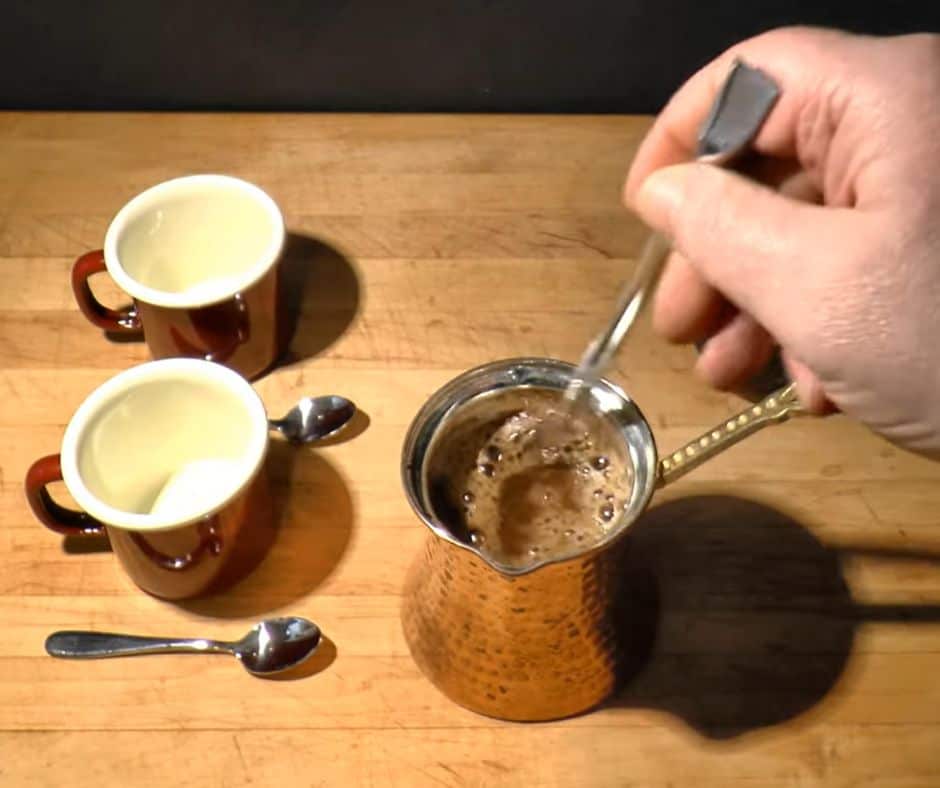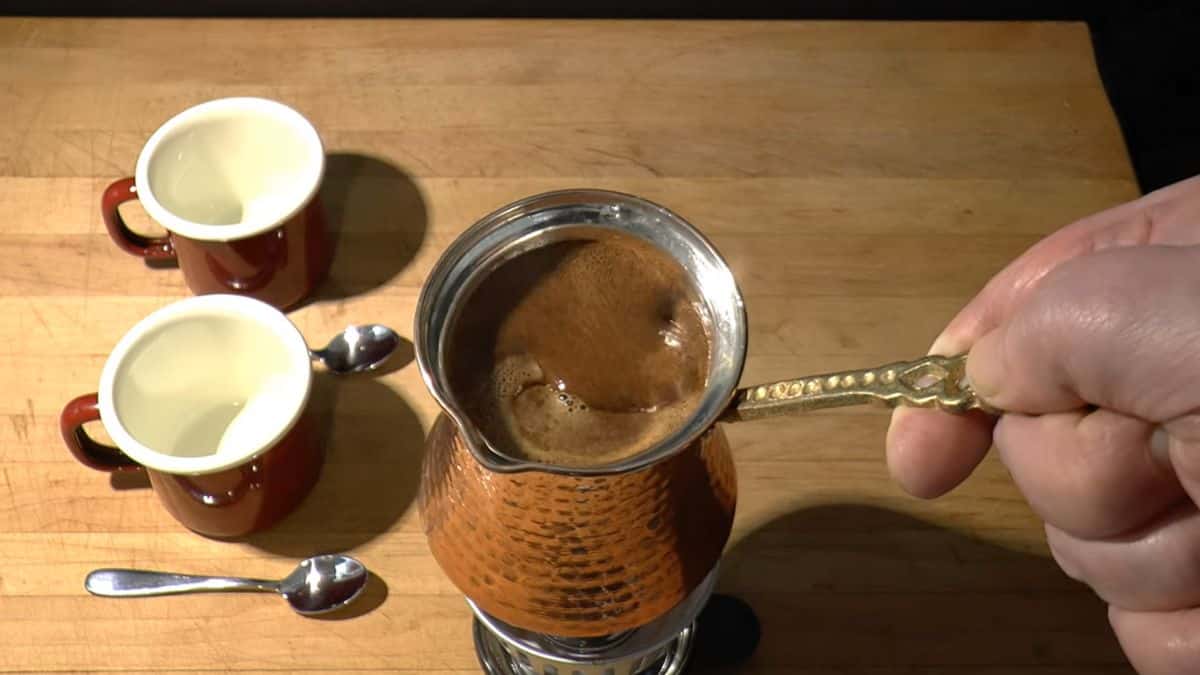turkish coffee not foaming
Turkish coffee is a popular coffee preparation method that has been around for centuries. Making Turkish coffee involves using a cezve, a unique pot made of copper or brass, to boil finely ground coffee and water over low heat. The result is a rich and flavorful cup of coffee, often accompanied by a layer of foam.
However, it is not uncommon for Turkish coffee to not foam, leaving it with a less pleasing appearance and texture. In this blog post, we will explore why Turkish coffee may not foam and provide tips on how to make Turkish coffee that doesn’t foam.
Why Turkish coffee may not foam

Several factors can affect the foam production in Turkish coffee:
- Coffee bean quality: The coffee beans used to make Turkish coffee considerably influence foam production. Beans that have not been newly roasted very darkly or with a low oil content are less prone to create foam.
- Grinding process and fineness: The grinding method and fineness of the coffee can also impact foam formation. The coffee grinds must be ground exceptionally finely for the oils in the beans to be released, resulting in foam.
- Water temperature and quantity: The temperature and quantity of water required to produce Turkish coffee are other vital considerations. Foam creation might be hampered if the water is excessively hot or cold. Similarly, the foam quality will suffer if the water-to-coffee ratio is incorrect.
- Coffee pot material: The material of the coffee pot can also play a role in the foam production. Copper and brass pots are preferred due to their ability to conduct heat evenly, which helps produce foam.
Tips for making Turkish coffee that doesn’t foam

Now that we understand the reasons why Turkish coffee may not foam let’s explore some tips for making Turkish coffee that doesn’t foam:
- Choosing high-quality beans: To ensure that your Turkish coffee produces foam, use high-quality coffee beans that are fresh, well-roasted, and have a high oil content.
- Grinding the coffee to the correct fineness: Grind the coffee very finely to allow for the oils to be released, which is what creates the foam. Use a burr grinder to ensure a consistent grind.
- Using cold or room temperature water: Use cold or room temperature water to avoid scorching the coffee grounds, which can affect the foam production.
- Adjusting the coffee-to-water ratio: Use the correct ratio of coffee to water (around one tablespoon of coffee per four ounces of water) to ensure a good foam production.
- Preheating the coffee pot: Preheat the coffee pot before adding the coffee and water. This will help to create a consistent temperature and aid in the production of foam.
Step-by-step guide for making Turkish coffee without foam
Here is a step-by-step guide for making Turkish coffee that doesn’t foam:
Ingredients and equipment needed:
- 1 cup cold or room temperature water
- 2 tablespoons finely ground coffee
- 1 cezve (Turkish coffee pot)
Preparation steps:
- Add the water to the cezve and heat it over medium heat until it is hot but not boiling.
- Add the finely ground coffee to the hot water and stir well.
- Reduce the heat to low and allow the coffee to simmer for around 2-3 minutes.
- Once the coffee is simmering and has darkened in color, remove it from the heat and allow it to sit for a minute to settle.
Brewing and serving tips:
- When pouring the coffee into the cups, pour slowly and try to keep the foam intact. If there is no foam, don’t worry – the coffee will still be flavorful and delicious.
- Turkish coffee is traditionally served with a glass of water to cleanse the palate between sips.
- You can also serve Turkish coffee with a small piece of Turkish delight or other sweet treats for an authentic experience.
Conclusion
Turkish coffee is a unique and flavorful way to enjoy your morning coffee. While foam production is integral to the traditional Turkish coffee experience, many factors can affect it. By using high-quality beans, grinding the coffee finely, adjusting the coffee-to-water ratio, and preheating the coffee pot, you can create a delicious cup of Turkish coffee without foam. Remember, even if your coffee doesn’t foam, it will still be a rich and flavorful way to start your day.
FAQ:
Why is foam essential in Turkish coffee?
Foam is a traditional and essential part of Turkish coffee, providing a smooth and creamy texture. It also indicates the quality of the coffee beans used and the preparation method.
Can I still make Turkish coffee without foam?
Yes, you can still make Turkish coffee without foam. While foam is an essential part of the traditional Turkish coffee experience, the coffee will still be flavorful and delicious without it.
What can I do if my Turkish coffee doesn’t foam?
If your Turkish coffee doesn’t foam, you can adjust the coffee-to-water ratio, use high-quality beans, grind the coffee finely, and preheat the coffee pot. These factors can significantly impact the foam production in Turkish coffee.
Can I brew Turkish coffee with a different type of coffee pot?
While a cezve is a traditional pot for making Turkish coffee, any small pot or pan that allows you to manage the temperature of the water and coffee would suffice. Using a cezve, on the other hand, can increase the quality and texture of the coffee.
What foods can I pair with Turkish coffee?
A glass of water accompanies Turkish coffee to cleanse the palate between swallows. For a more genuine experience, serve it with a small Turkish delight or other sweet sweets.






